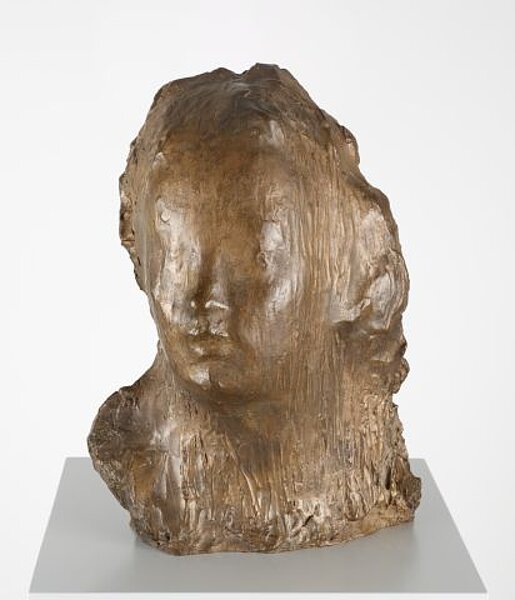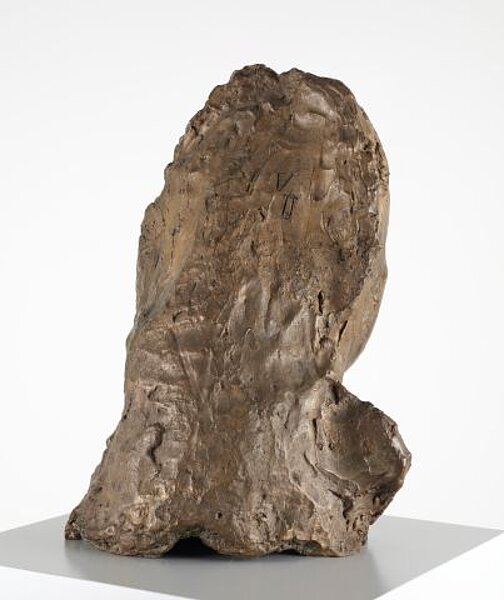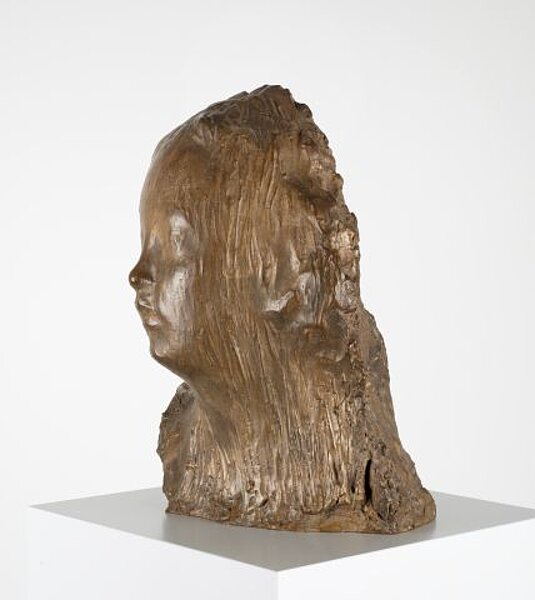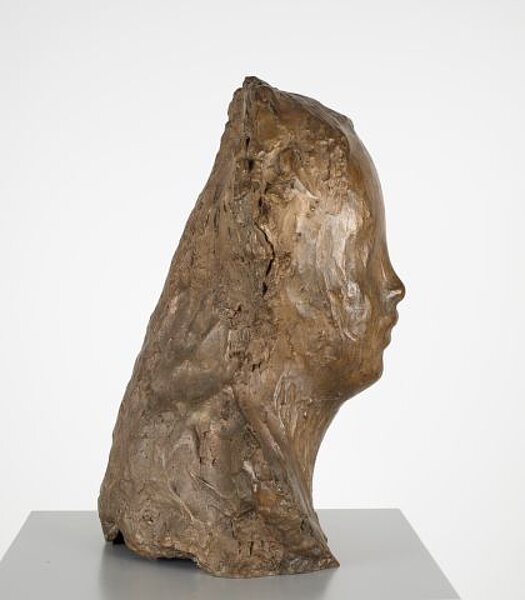
Rosso, Medardo
Vianello-Chiodo, Mario
Ecce Puer
Behold the Child
1906
| Object description | Bronze casting |
|---|---|
| Object category | sculpture |
| Material |
object:
bronze
|
| Technique |
object:
bronze casting
|
| Dimensions |
object:
weight: 10,4 kg
object size:
height: 45 cm,
width: 33 cm,
depth: 29 cm
|
| Year of acquisition | 1964 |
| Inventory number | P 48/0 |
| Creditline | mumok - Museum moderner Kunst Stiftung Ludwig Wien |
| Rights reference | Gemeinfrei | public domain |
| Further information about the person | Rosso, Medardo [GND] | Vianello-Chiodo, Mario [GND] |
| Literature |
Porträts. Aus der Sammlung Josef Pillhofer Medardo Rosso Laboratorium Moderne/Bildende Kunst, Fotografie und Film im Aufbruch Absencen |
The Latin title of this sculpture, “Ecce Puer”, translates as “See the Child”. Artist Medardo Rosso gave his bronze this name as it is the portrait of a six-year-old boy. The sitter was Alfred William Mond, the son of a wealthy businessman. An anecdote about this work says that the artist experienced a difficult block in his work, but that the boy hid behind a curtain and then peeped out, giving Rosso the inspiration to continue. This story embodies a key principle in Rosso’s art—that figure and surroundings melt into one another. In this case the face and the curtain merge. When exploring forms, Rosso worked with wax, and as a result his bronze sculptures always retain a sense of flow. They remain somehow approximate. His contemporaries saw his sculptures as mere preparatory drafts or sketches, known in Italian as “bozzetti.” Rosso did not wish to portray anatomy accurately or to copy the features of someone’s face precisely. He was interested in the moment when a head would emerge from the bronze as if from behind a veil. He said: “When I do a portrait, I cannot limit it to the lines of the head since this head belongs to a body; it is in an environment that has an influence on it, it makes part of a whole I cannot suppress.” This kind of work has been seen since the eighteenth century as a particularly virtuoso form of sculpture. Done in marble, these works depict a veil under which a face can be clearly recognized. There are a number of famous sculptures of Christ done this way, and Rosso’s Latin title is probably a reference to these. Like Auguste Rodin, Medardo Rosso is seen today as a key impressionist sculptor. After 1906, the year he made “Ecce Puer”, Rosso created no new original works, but concentrated entirely on new casts of his earlier sculptures.
© mumok – museum moderner kunst stiftung ludwig wien



